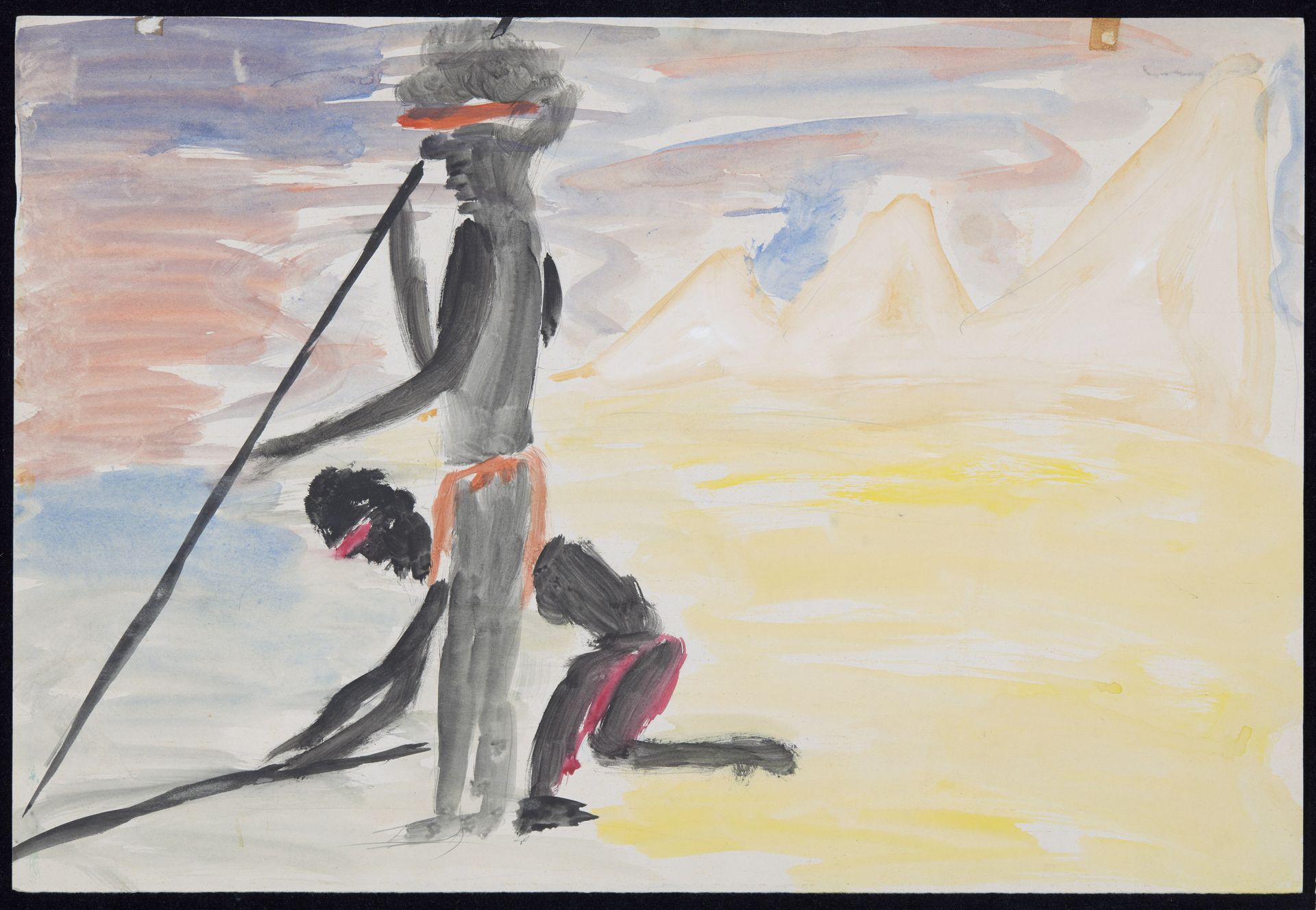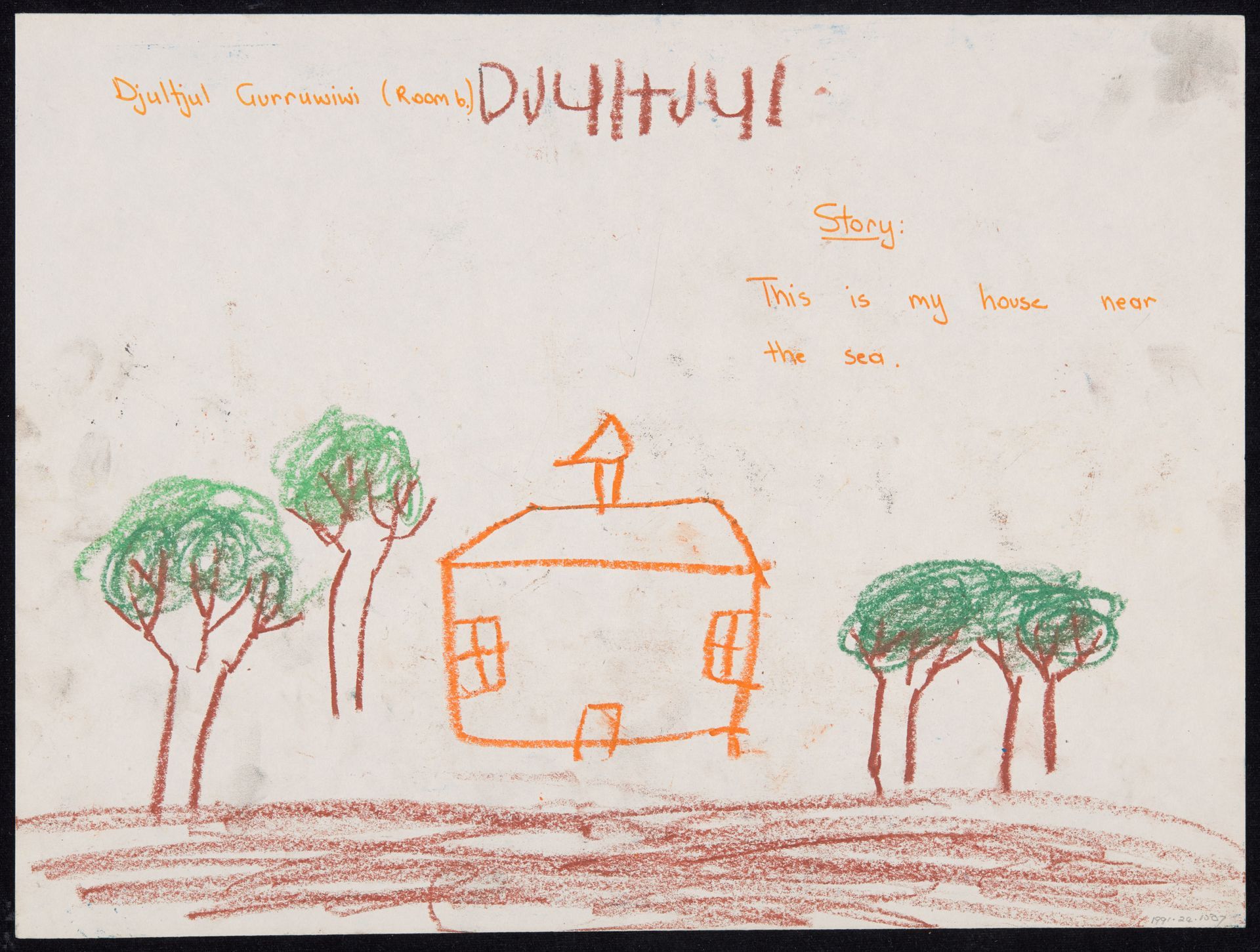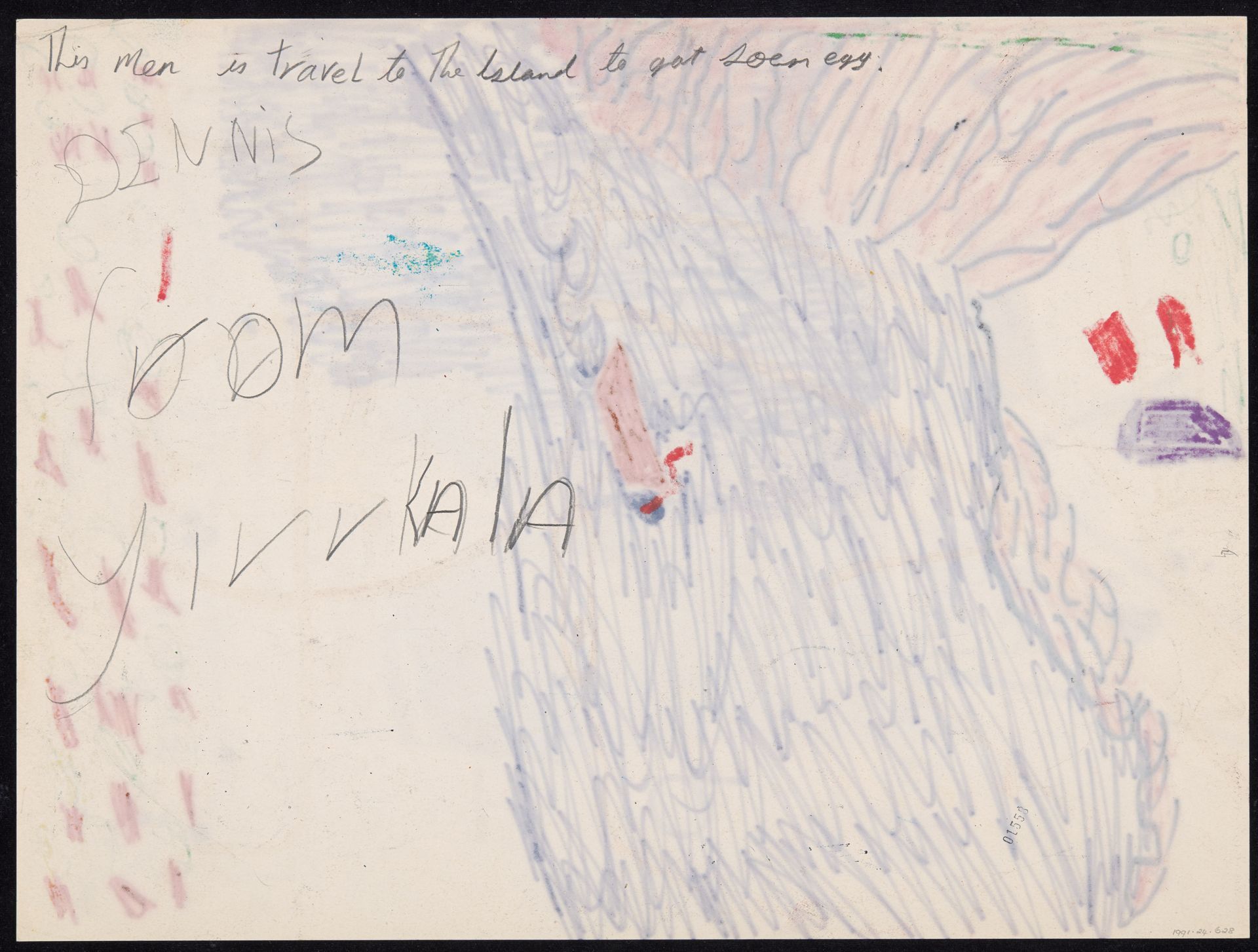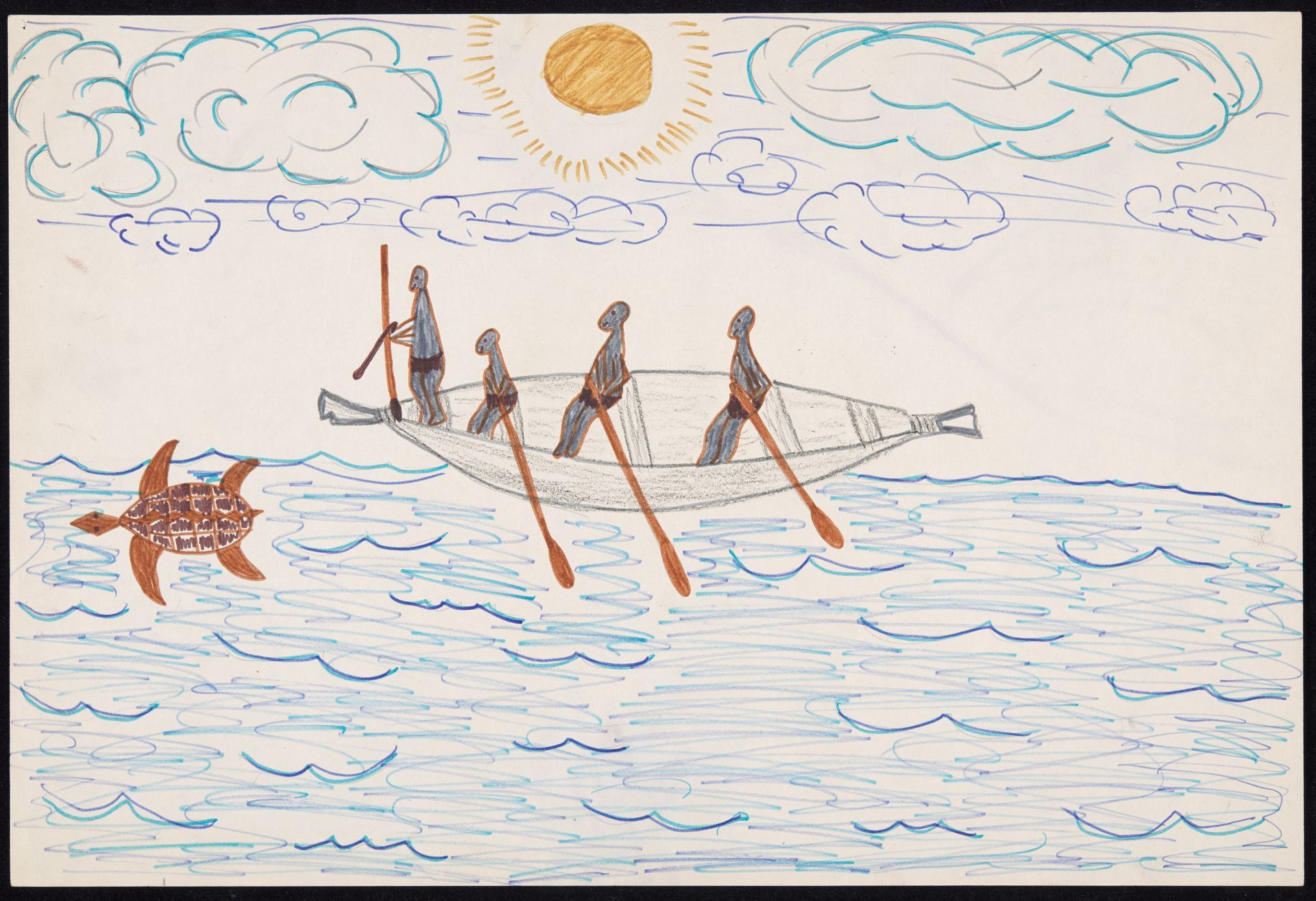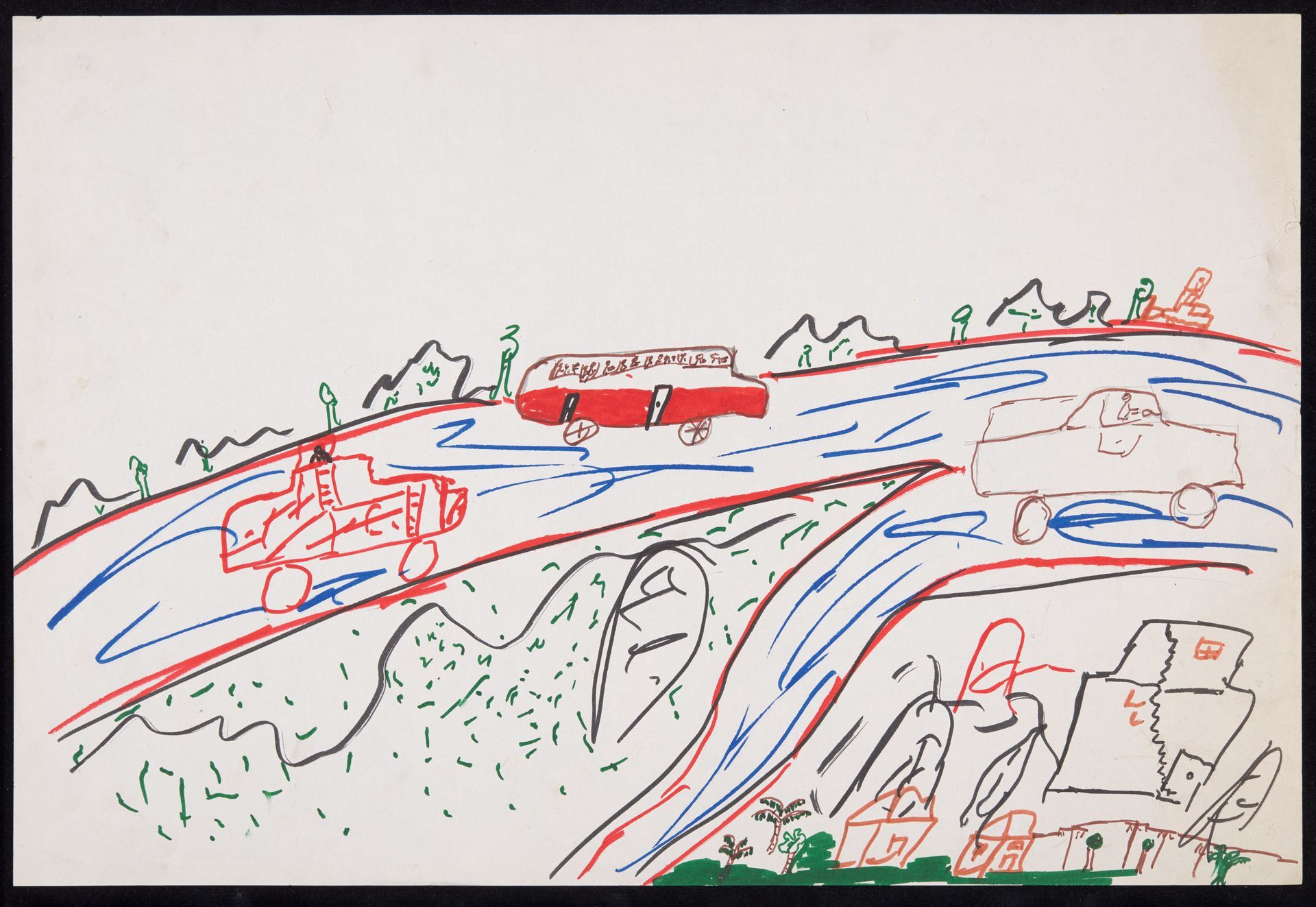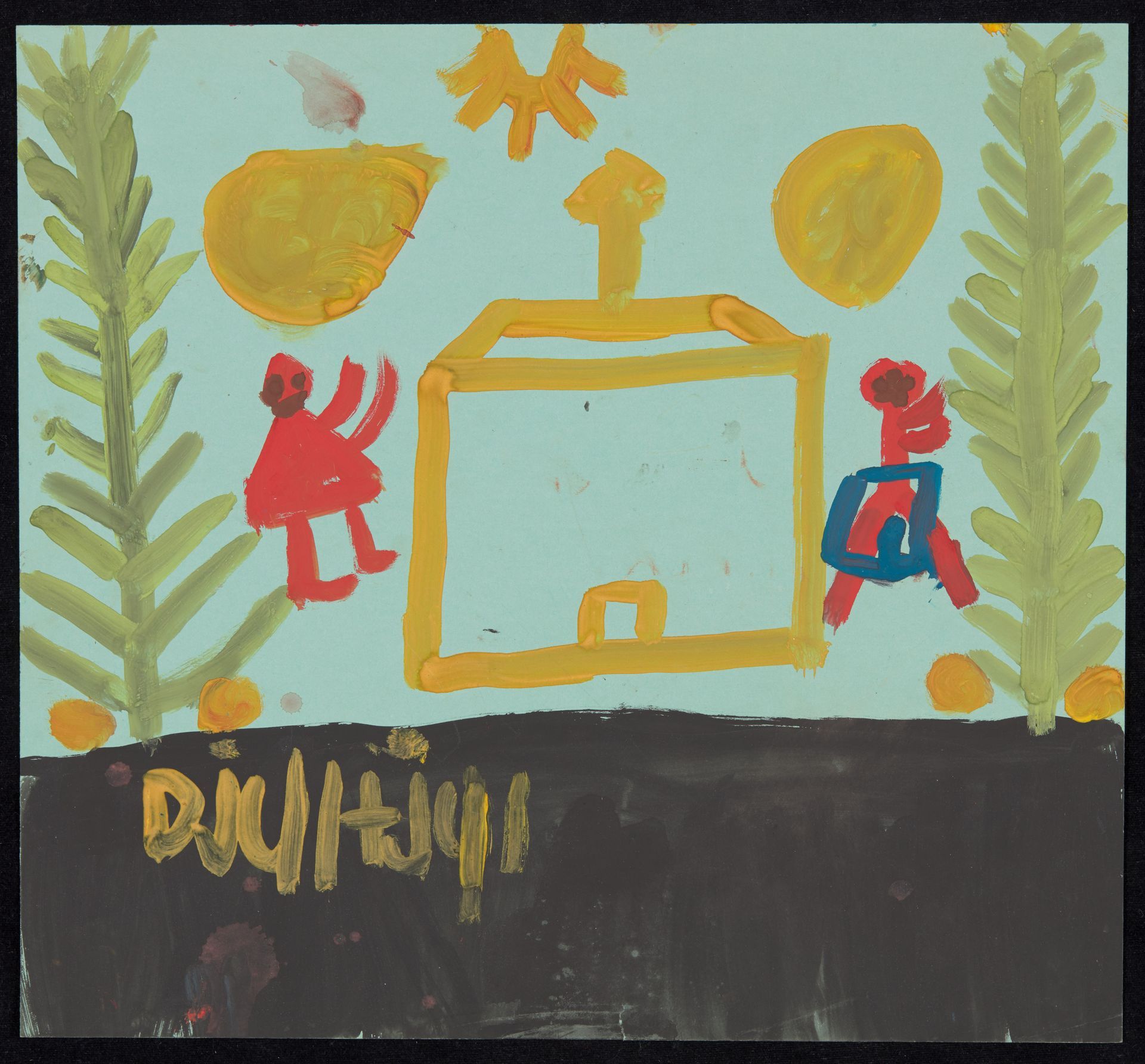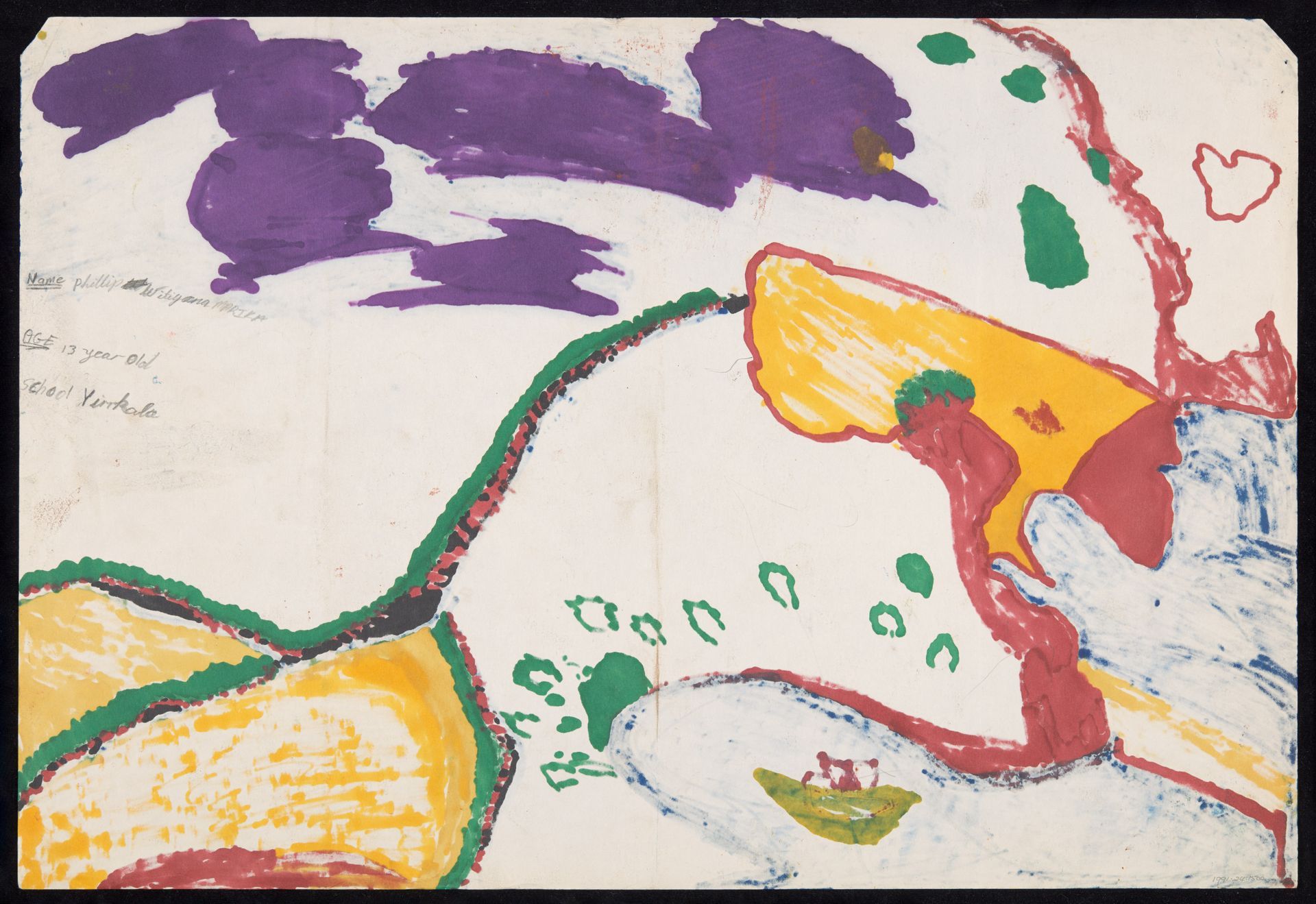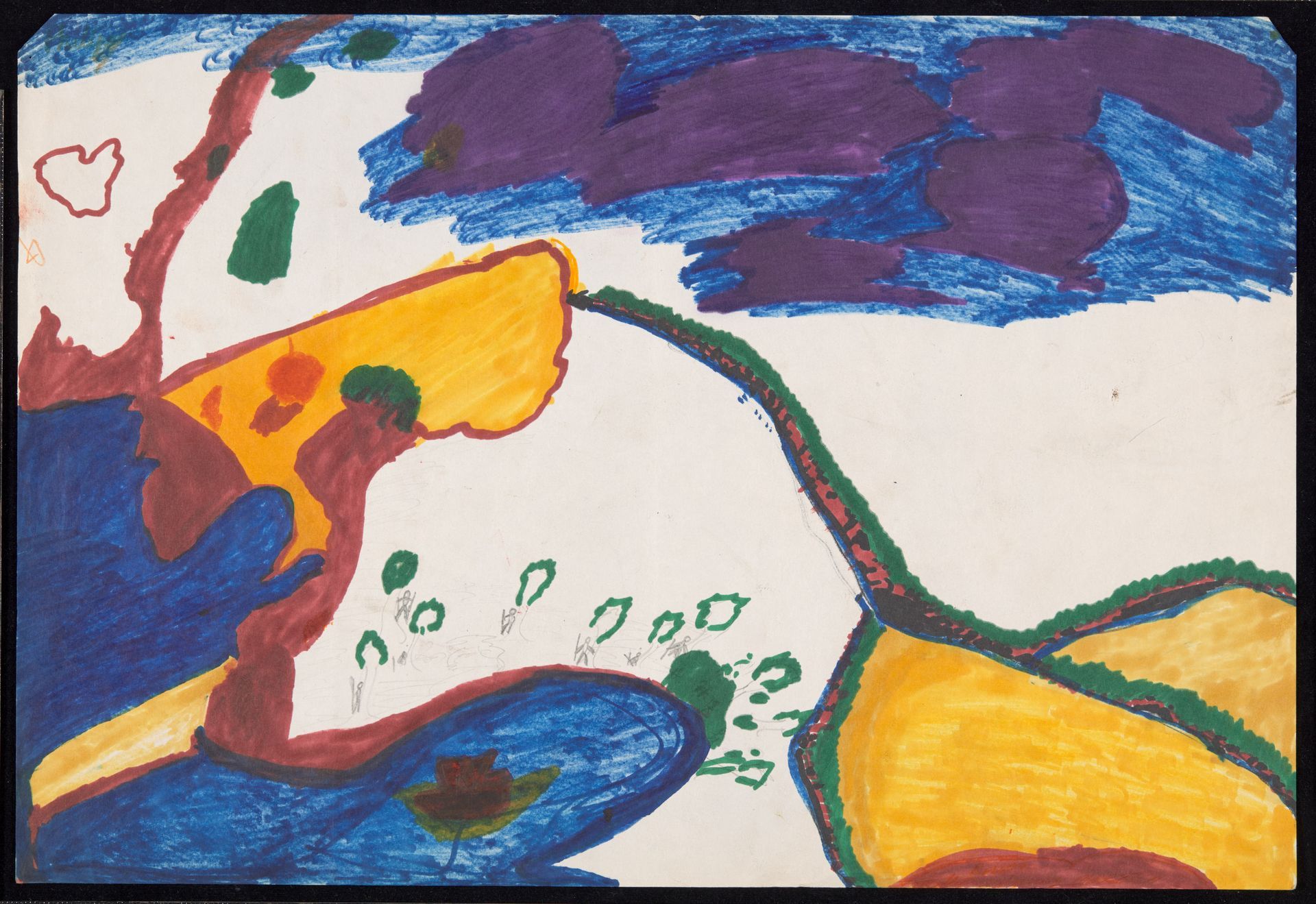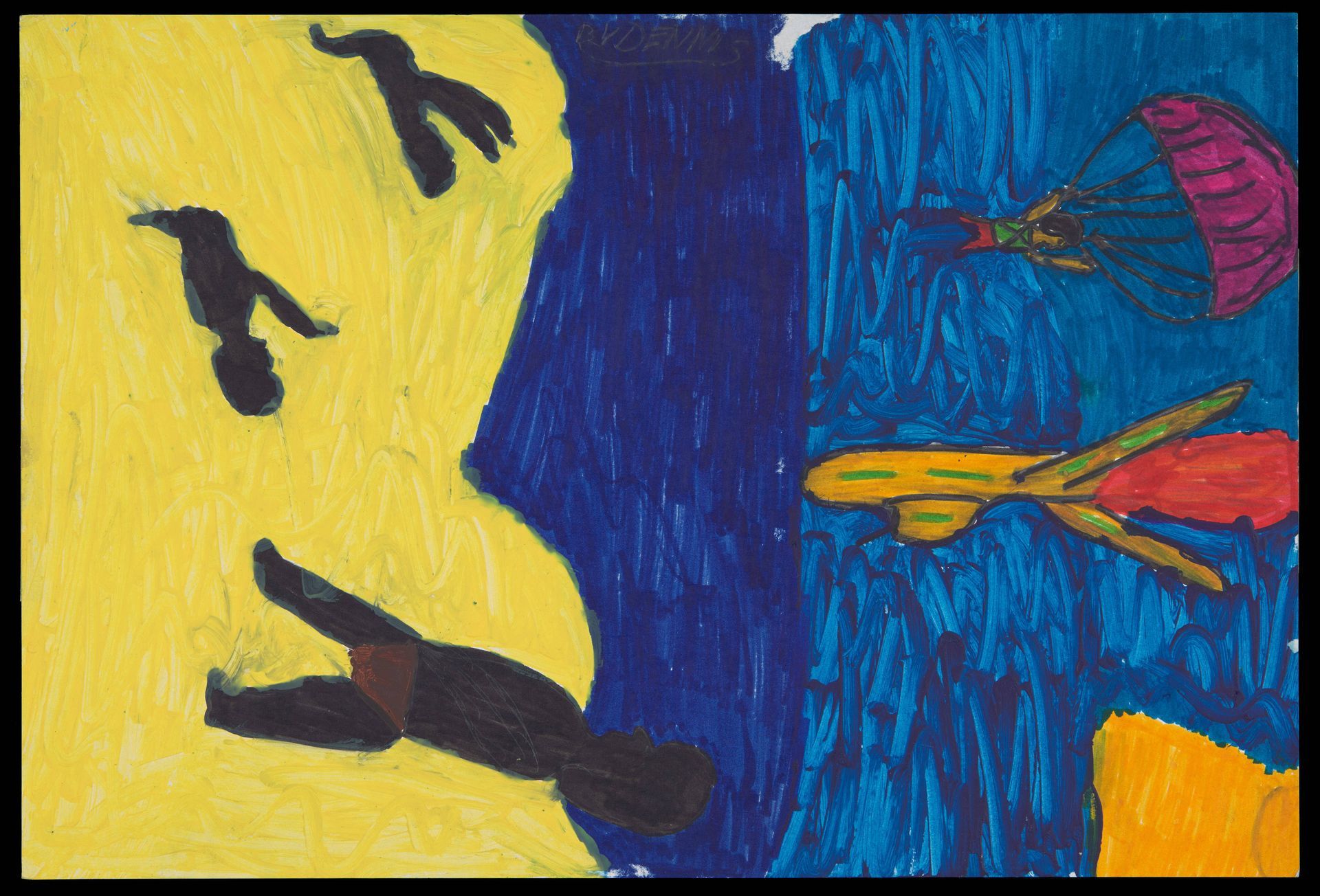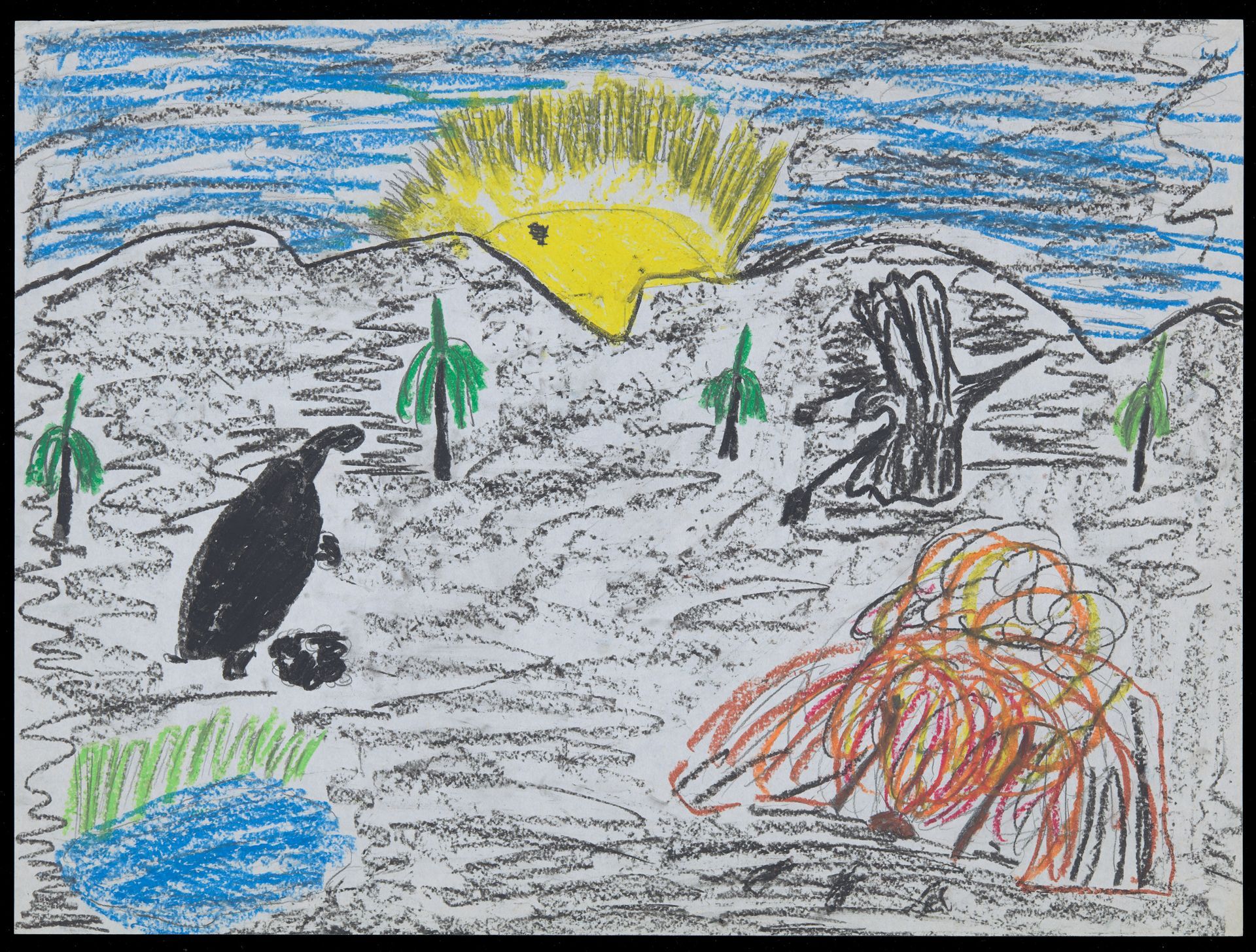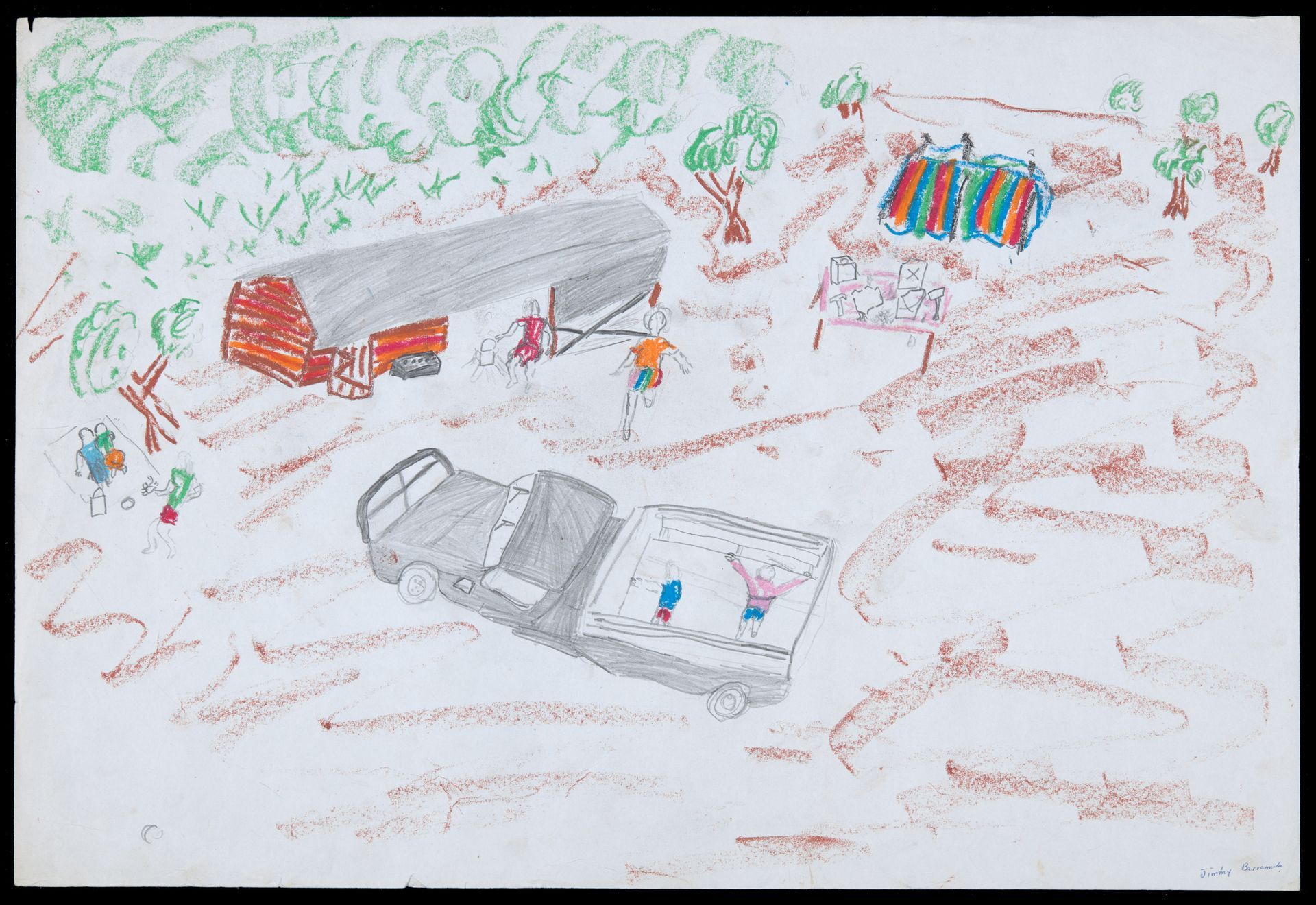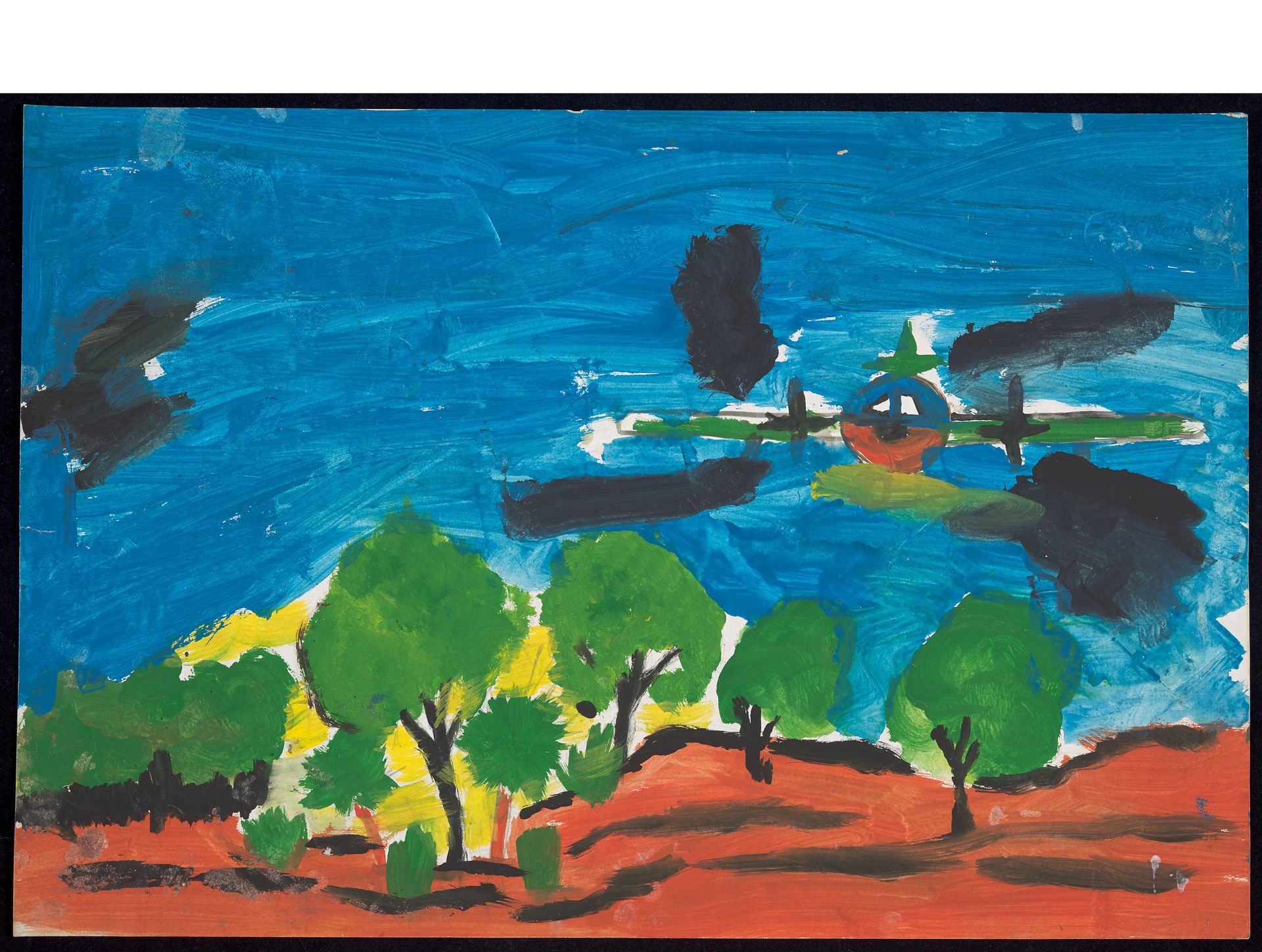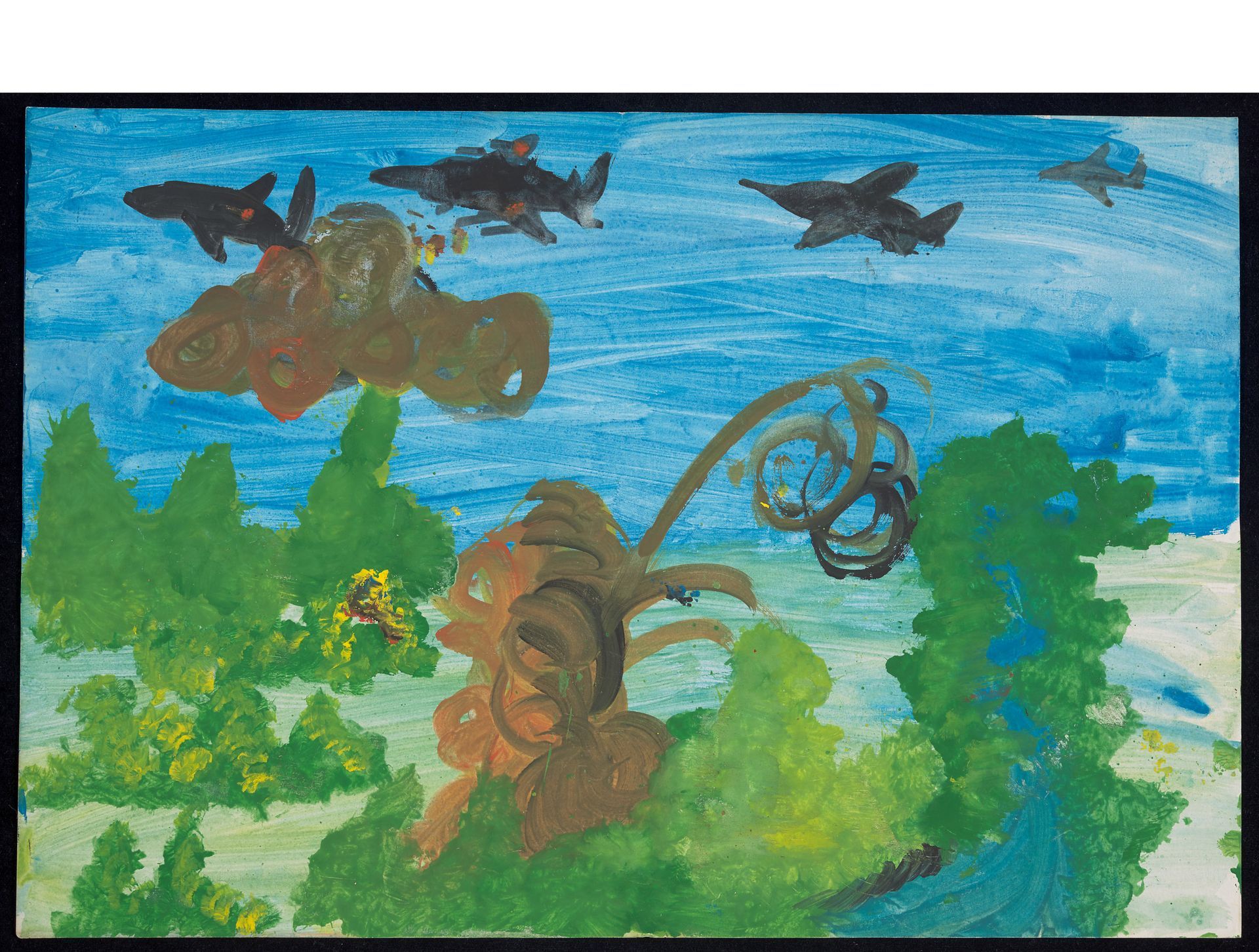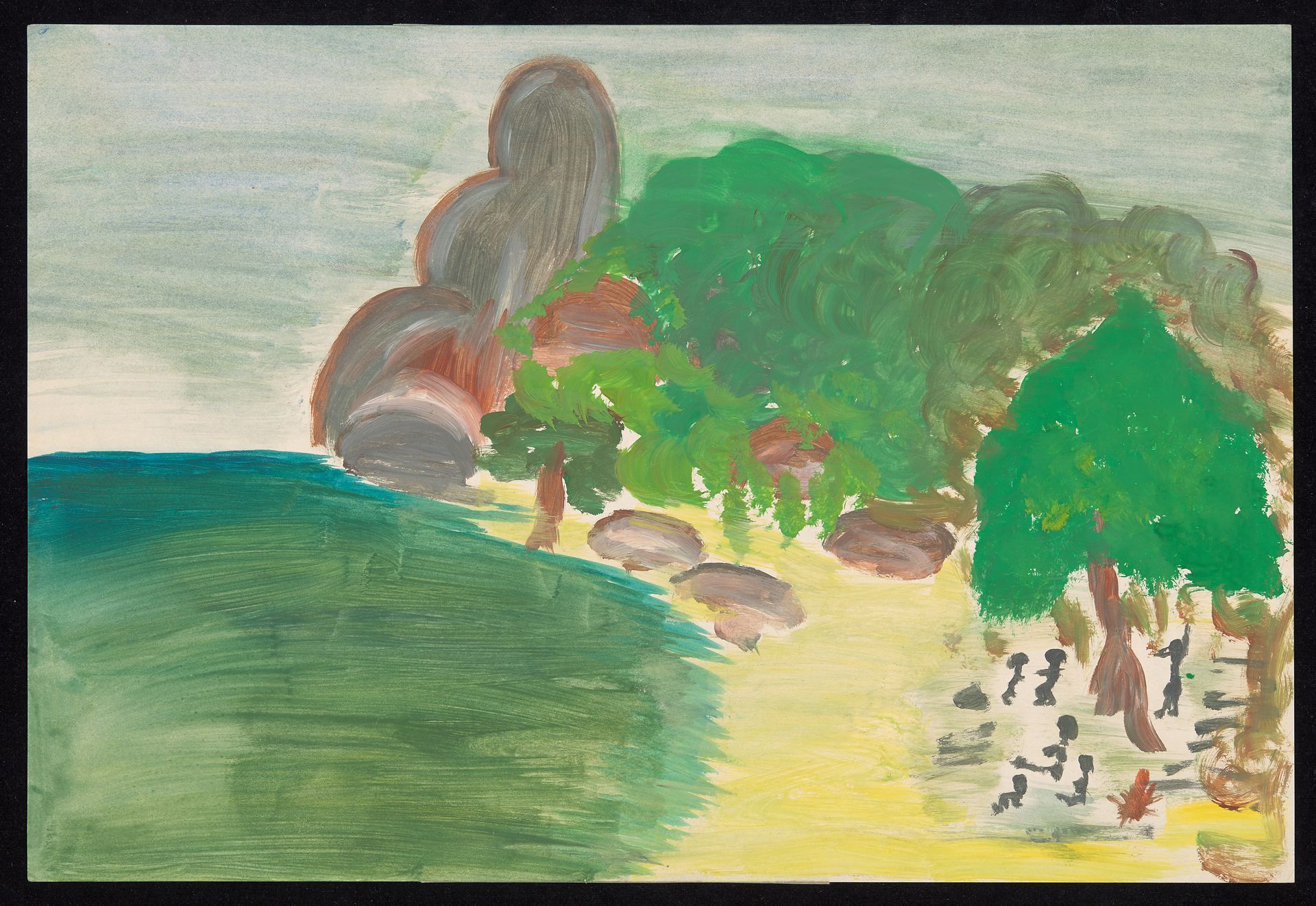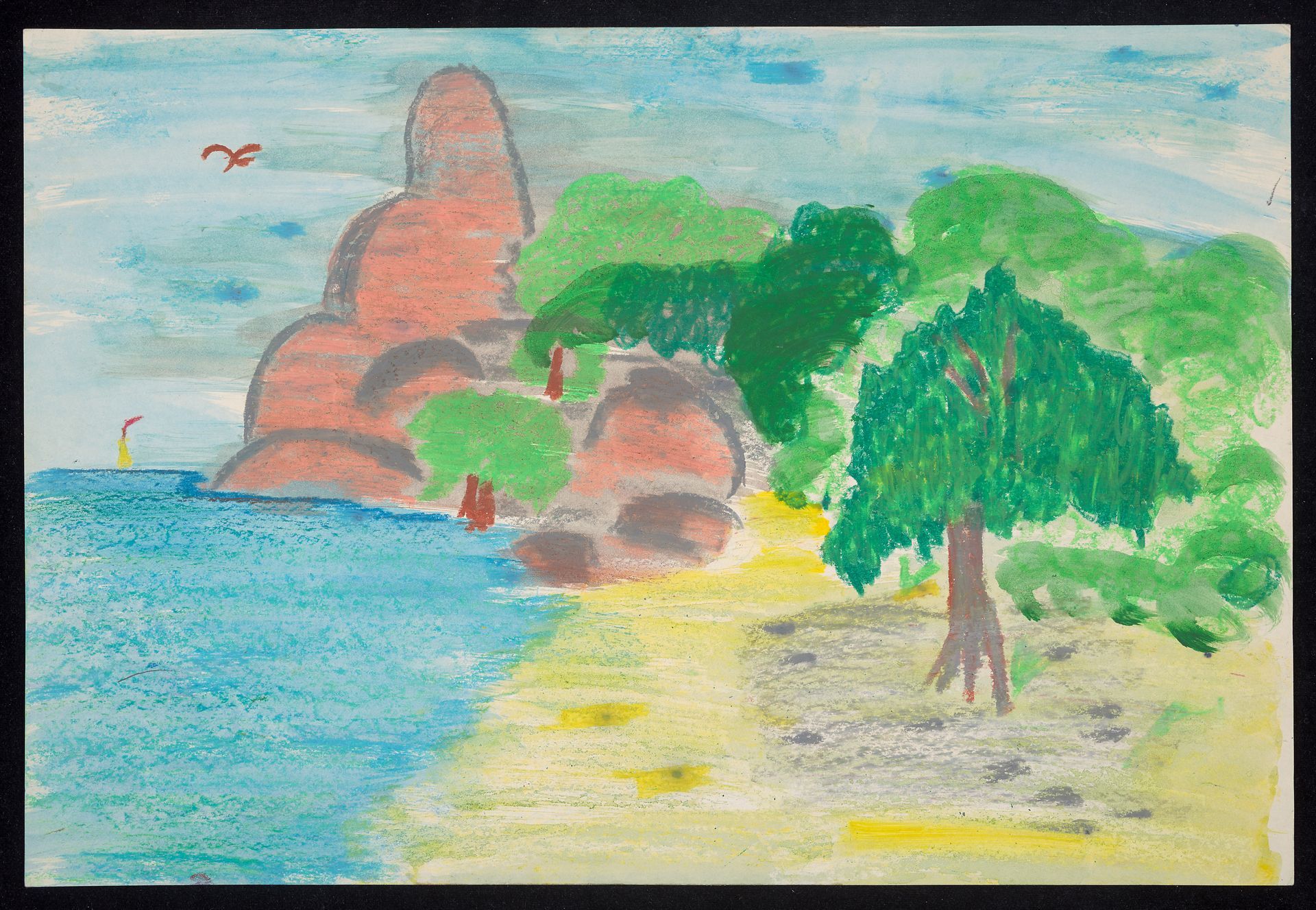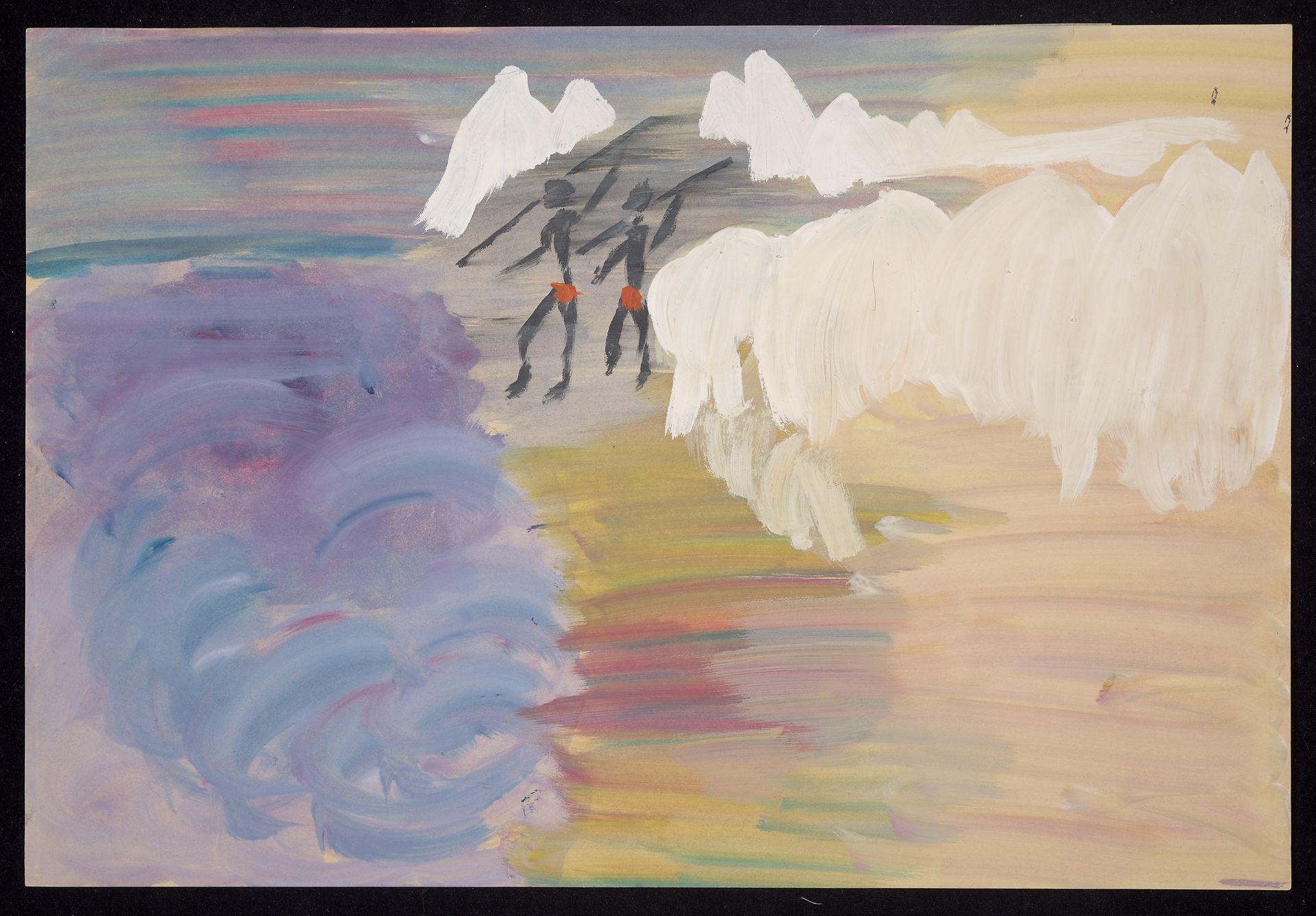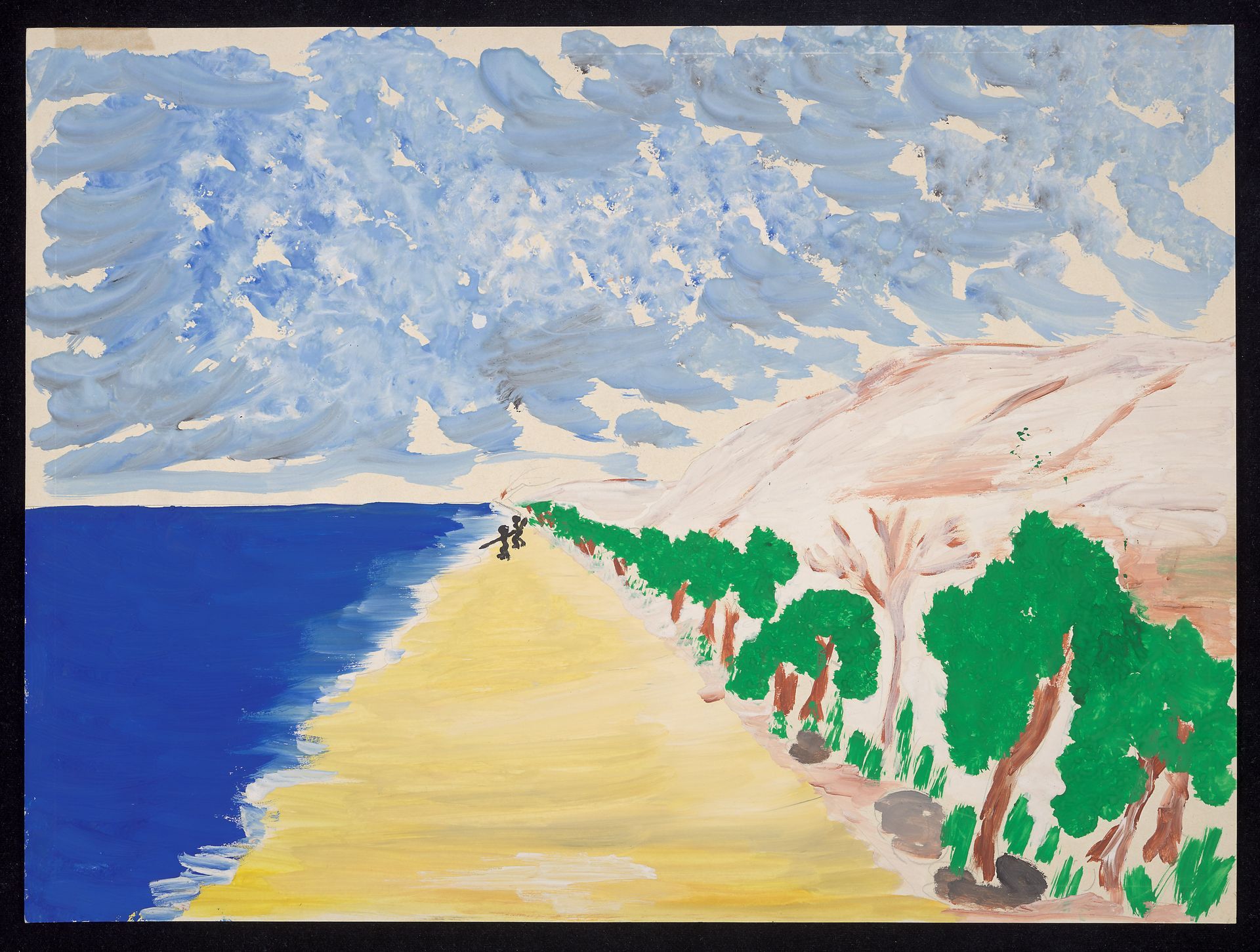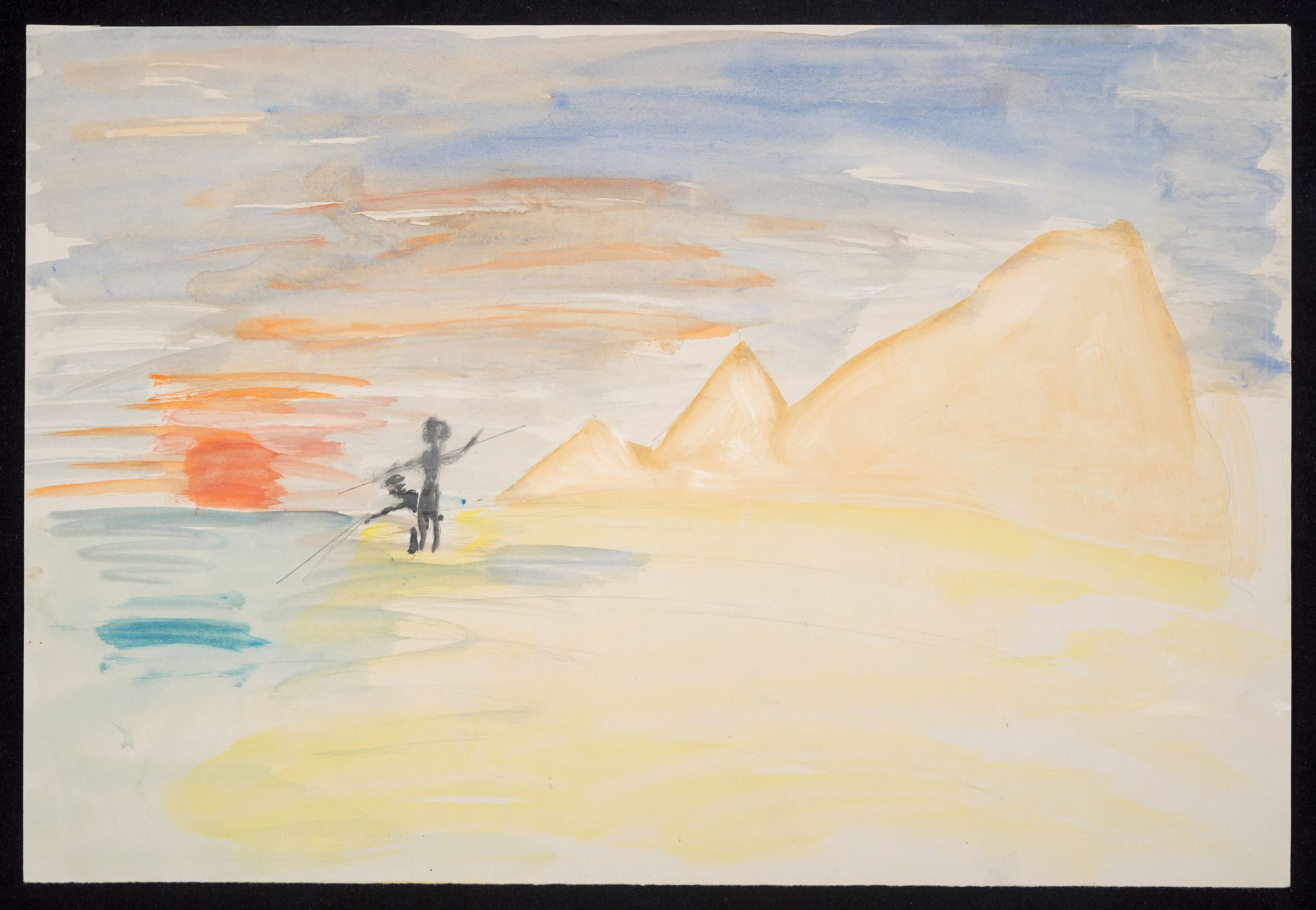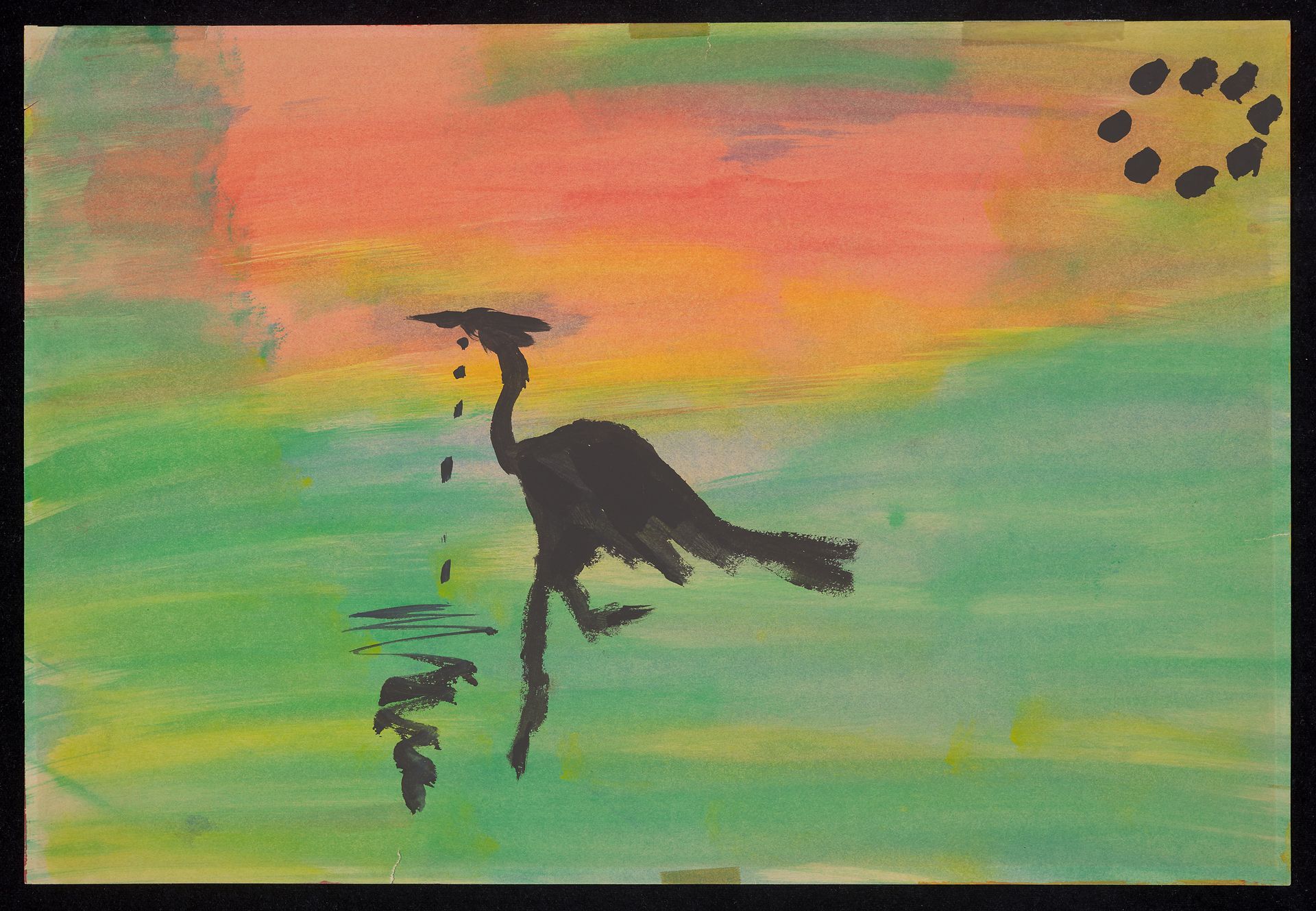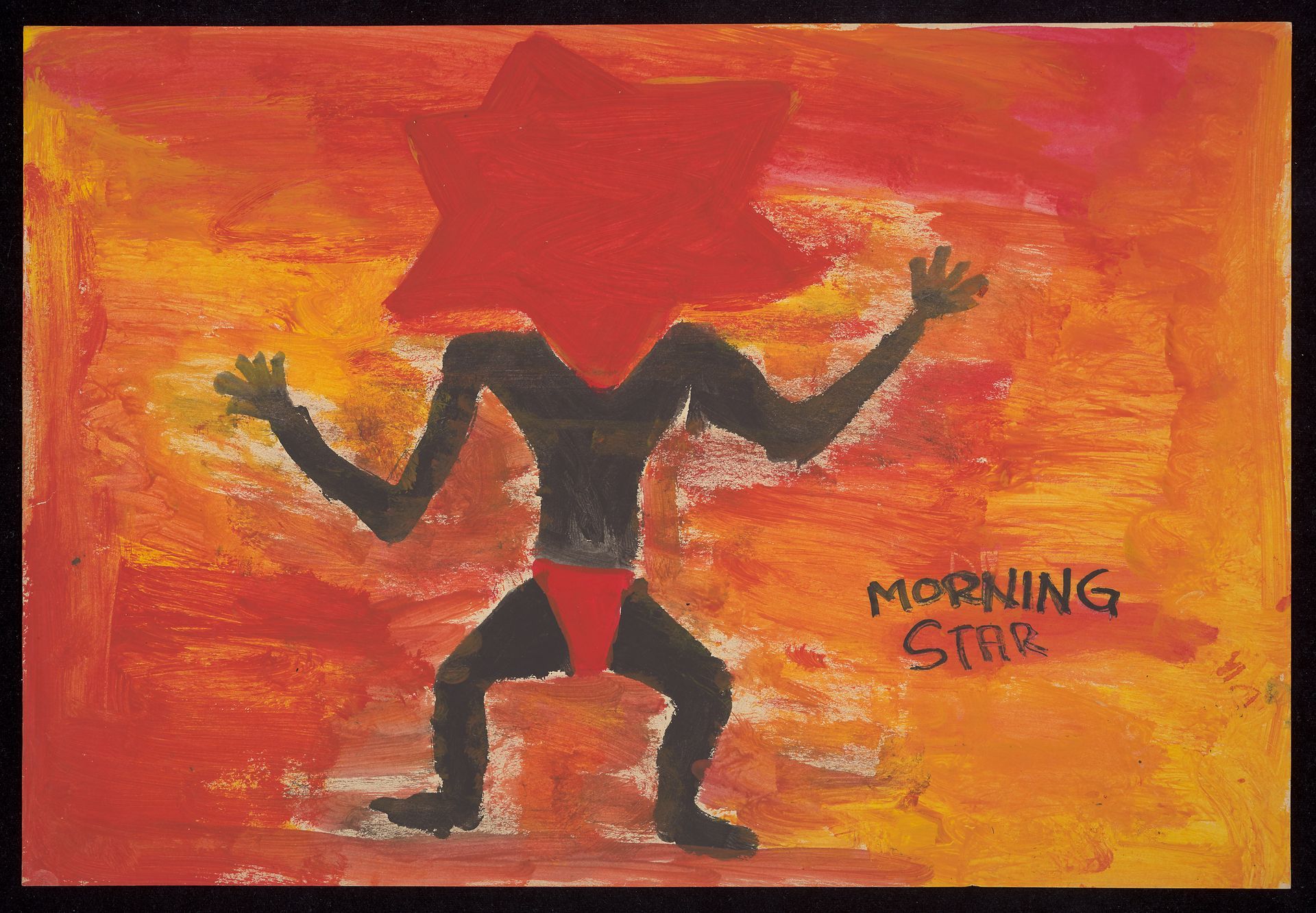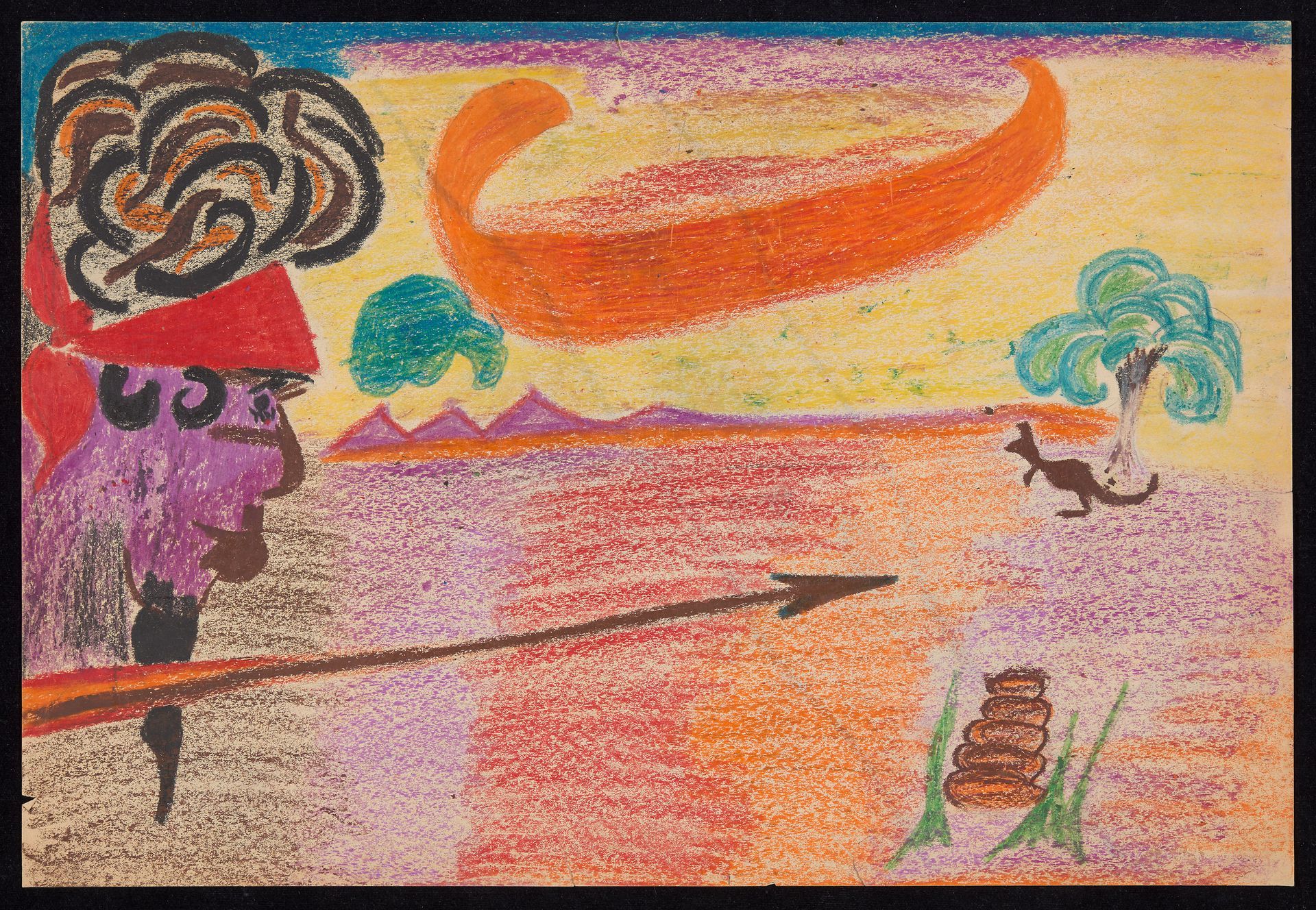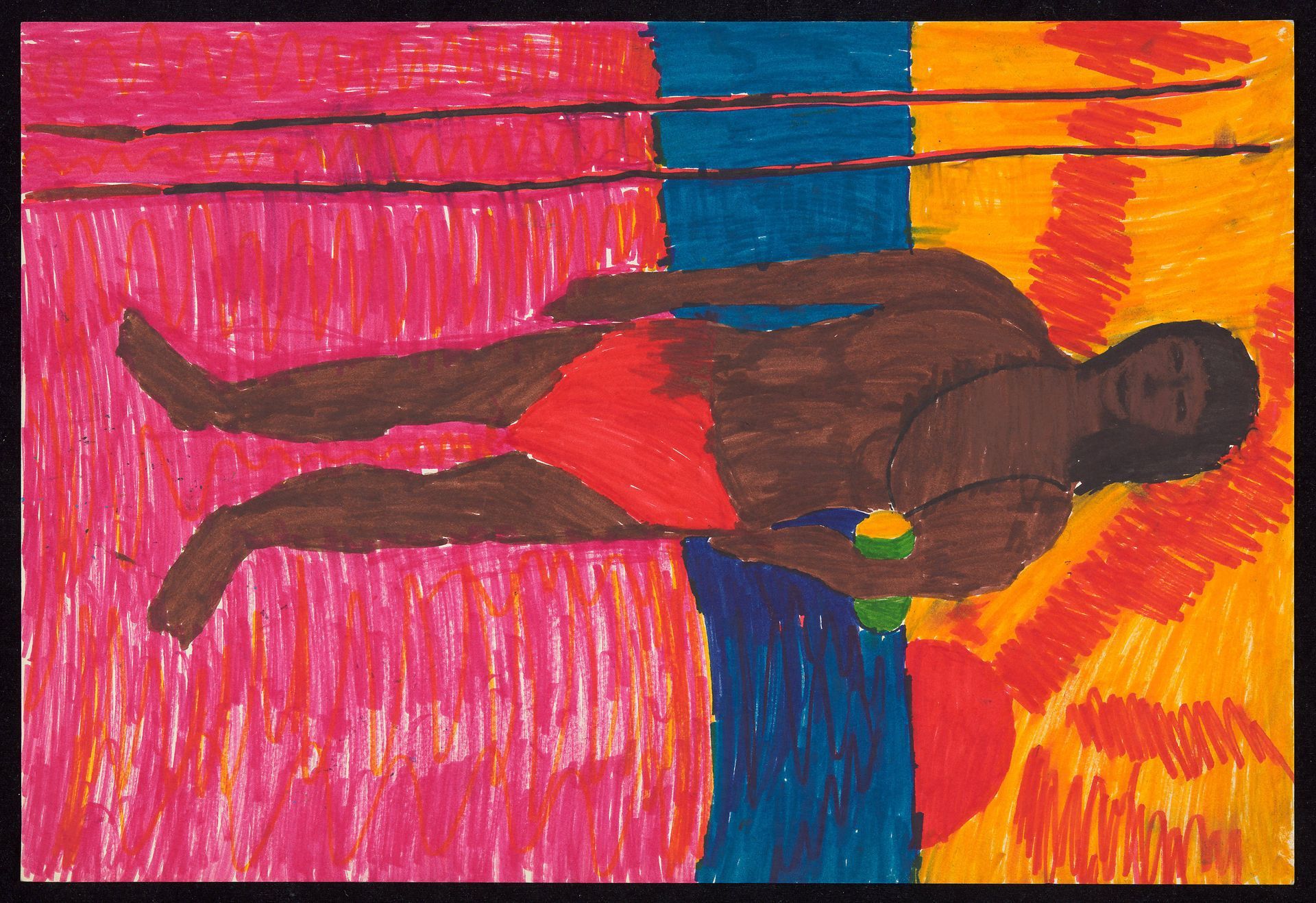1970s Aboriginal children’s art offers window into history
A project to reunite children’s drawings from the 1970s with their original Yolngu artists is now underway involving Buku-Larrnggay Mulka Centre in Yirrkala and the National Museum of Australia.
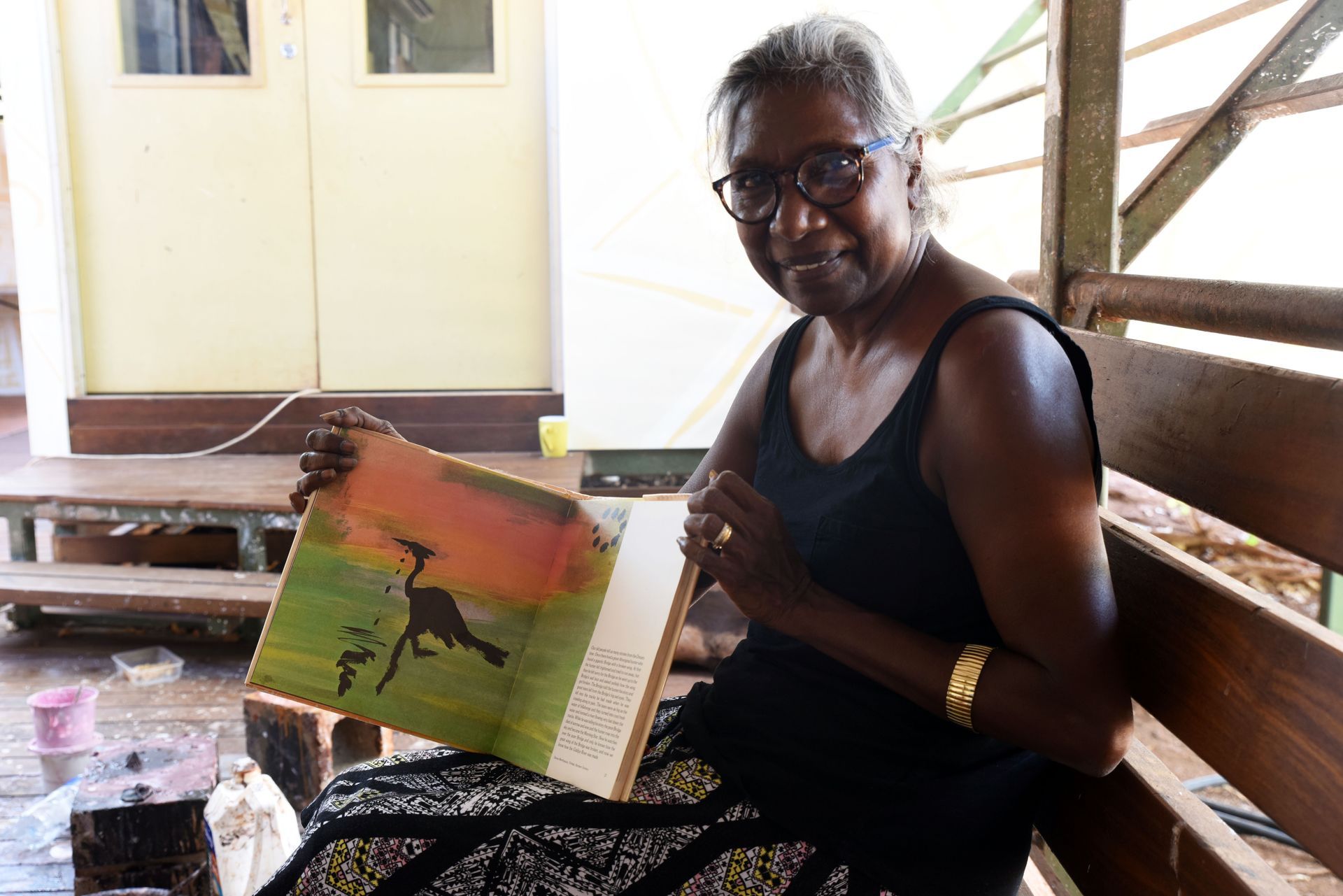
Merrkiyawuy Ganambar with her childhood drawing of a weeping brolga.
Included among the collection are drawings by Rirratjingu leader and original member of Yothu Yindi Witiyana Marika, NATSIA-award winning artist Wukun Wanambi, and current principal of Yirrkala School Merrkiyawuy Ganambar.
The drawings, done between 1975 and 1977, were collected to form part of a book called “The Aboriginal Children’s History of Australia: Written and Illustrated by Australia’s Aboriginal Children”, published in 1977.
The 346 drawings done by students at Yirrkala School, Dhupuma College and Milingimbi School, which have been returned to Yirrkala art centre, are just a tiny piece of the collection, with 3383 illustrations gathered from 70 schools Australia-wide.
Merrkiyawuy Ganambar was a student at Dhupuma College when her class was asked to take part in the project.
“I think we had to do three things that was happening at that time: one was the beginning, what they call the Dreamtime stories, the story of how life happened and that’s why I drew the two sisters down on the beach, and then the next one was what’s happening now, and the last one was what would you like to see in the future?”
Her drawings include a beautiful weeping brolga in front of setting sun; a depiction of the dreamtime story of Djankawu and Barrama, who divided Yolngu into two groups: Dhuwa and Yirritja; and a drawing of Tamarind trees at Drimmie Head, which were introduced by the Macassans and used by Yolngu to make a cough syrup. Each is accompanied by a description in her own words.
“[The teachers] said: ‘what would you like people to know about your country, or what’s happening on your country, on your land, at the moment, and history about your country, or stories of the Dreamtime?’” she remembers.
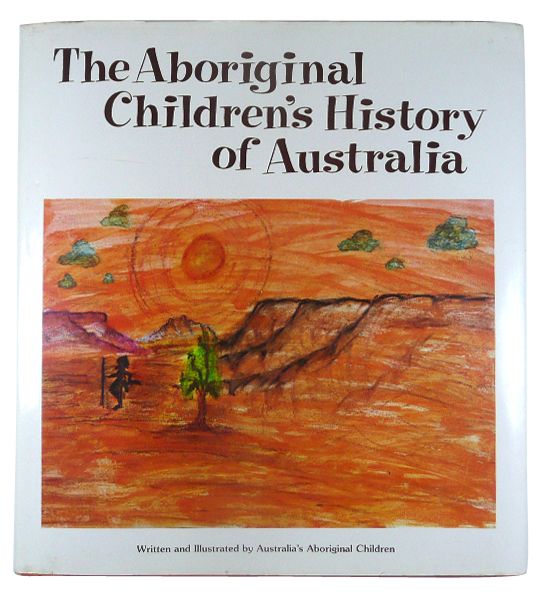
The final book published around 100 illustrations and stories and is divided into six categories: Dreaming, Old Time, The Macassans, The Whitefellas, Today and My Country. It includes works from all states except Victoria and Tasmania.
Three of Merrkiyawuy’s illustrations made it into the final book, and she was then asked to take part in a media tour around the country to launch it.
“I was 14 years old. I can’t remember [much]. I remember Melbourne because that’s where I met grandad – my great uncle,” she recalls. “My mother’s uncle was living there, Wandjuk. He lived in Melbourne at the time, Chairman for the Aboriginal Arts Board as it was called then, so he came on TV on the show with me.”
It was the then Aboriginal Arts Board, part of the Australia Council for the Arts, and chaired by Rirratjingu painter, actor, composer and land rights activist, Wandjuk Marika, which sponsored the project.
Mr Marika writes in the foreword:
“This is a unique book. It is the story of Australia as told and illustrated by the Aboriginal children of Australia.”
“Through the honest eyes and minds of children, a new vision of Australia is unfolded – the Australia of the Dreamtime.
“Through the natural simplicity of their words and paintings, they convey their enjoyment and enthusiasm for the land which has been theirs for over 40,000 years.”
A Northern Territory perspective
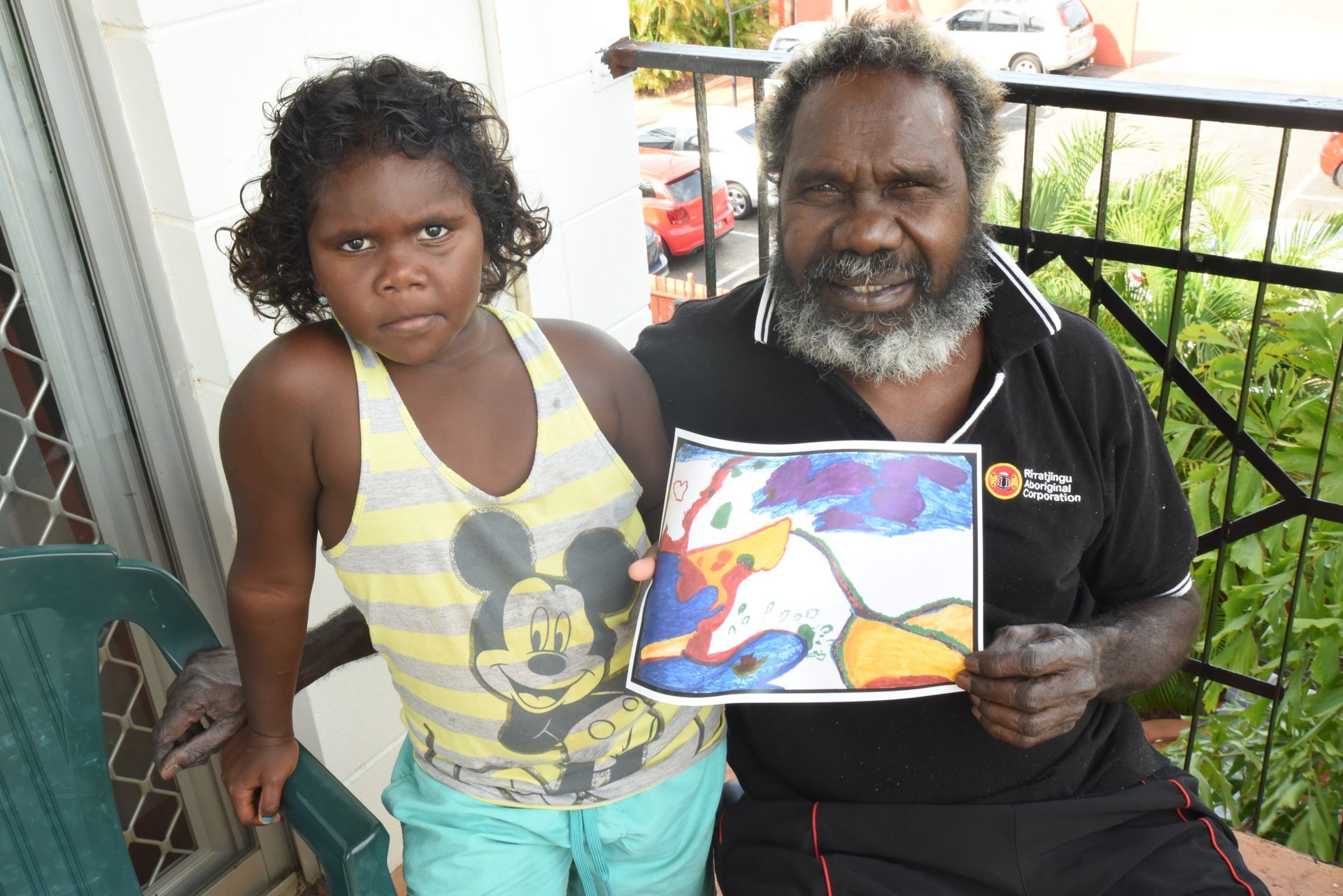
Rirritjingu leader, Witiyana Marika (right), with his granddaughter Rurrthana Gumana, holding a drawing he did as a 13-year old of his homeland, Gulurunga.
From the Northern Territory, more than 900 works were collected from schools including Kormilda College, Port Keats School, Wave Hill Station School, Oenpelli School, Milingimbi School, Daly River and Wattie Creek.
They include a drawing of Murinbata man Nemarluk who was jailed in Darwin for killing two Japanese soldiers and escaped and swam across Darwin harbour to his country of Port Keats. There are Dreaming stories, the arrival of the Macassans to Arnhem Land in search of trepang (sea cucumber) and depictions of bauxite mining at Gove.
Rirritjingu leader Witiyana Marika drew his homeland of Gulurunga. When his drawing is returned to him, he points out the sand dunes and river, Yolngu people camped at the bay and a Macassan boat at sea. He was 13 when he did this drawing and remembers his teacher, Mr Turner, telling the class to draw something for a children’s book.
A unique window into history
Renowned anthropologist Professor Howard Morphy, who connected the National Museum of Australia with the Yirrkala Art Centre, says the illustrations have historic significance.
“The collection is a phenomenal resource for many reasons – it provides a unique window into Indigenous children’s sense of their place in history nearly 50 years ago; it provides early works by Indigenous Australian children who have subsequently played important roles in their communities and some of whom have become artists later in life; it is also going to be the source of sadness in many cases and joy in others.”
“It is a huge resource that will increase in its significance over time as there are no equivalents. Interestingly there is no similar resource on non-Indigenous children from that era, though one could probably be put together from different sources at enormous expense,” he says.
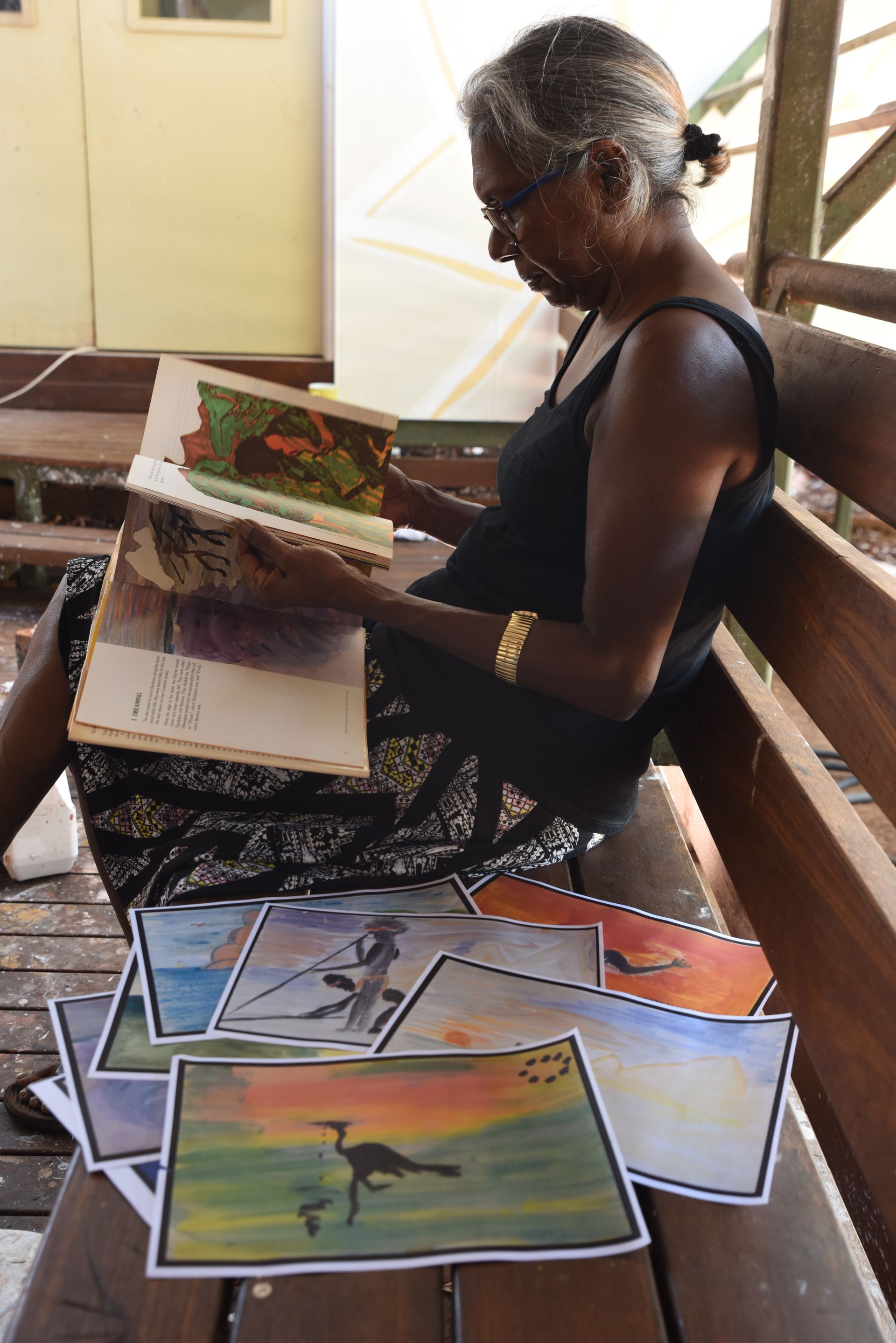
Merrkiyawuy Ganambar was a student at Dhupuma College when her class was asked to take part in the project. She flicks through “The Aboriginal Children’s History of Australia,” with copies of her drawings on the seat in front.
“Indeed it is an example of one of the many innovative initiatives developed by the Australia Council’s Aboriginal Arts Board in its early years that shows what government arts funding can do. But it does need to be followed up to return value into the future.”
That is indeed the plan. The National Museum of Australia, which has held the works since 1991, is digitising the drawings and hoping to reunite copies with the original artists. Many of the drawings are already accessible on the National Museum of Australia website.
Chairwoman of Artback NT Denise Sylvestro, says an exhibition and tour of the works is the sort of thing Artback NT would be interested in supporting.
“I would imagine, yes. They are absolutely amazingly beautiful works and they are very significant works because they come from the 70s and it’s the children’s reflection of how the children perceived their community and I think this is definitely something that Artback would be interested in,” she said.
“The role of Artback is to help promote, develop and tour art that is relevant to the Territory and we are particularly interested in assisting remote communities to have access to such exhibitions.”
Dr Ian Coates, head of the Collections Development Team at the National Museum of Australia says the museum is keen to get the drawings into circulation again so people can see the way that Aboriginal children at that time saw Australian history. He says it tells a unique story about how children viewed their world.
“It’s kind of interesting that from Yirrkala, there’s quite a few drawings about the Bauxite mine, there’s drawings about the arrival of [Wilbur] Chaseling [founder of Yirrkala mission in 1935], the mission. But there’s also drawings about Captain Cook arriving and then there are some drawings which conflate all those elements to a history, so it’s pretty amazing.”
“When we do projects in particular communities, we do kind of take copies of those drawings back to those places,” he says. “But there hasn’t been a single project to reunite those drawings with communities as yet.”
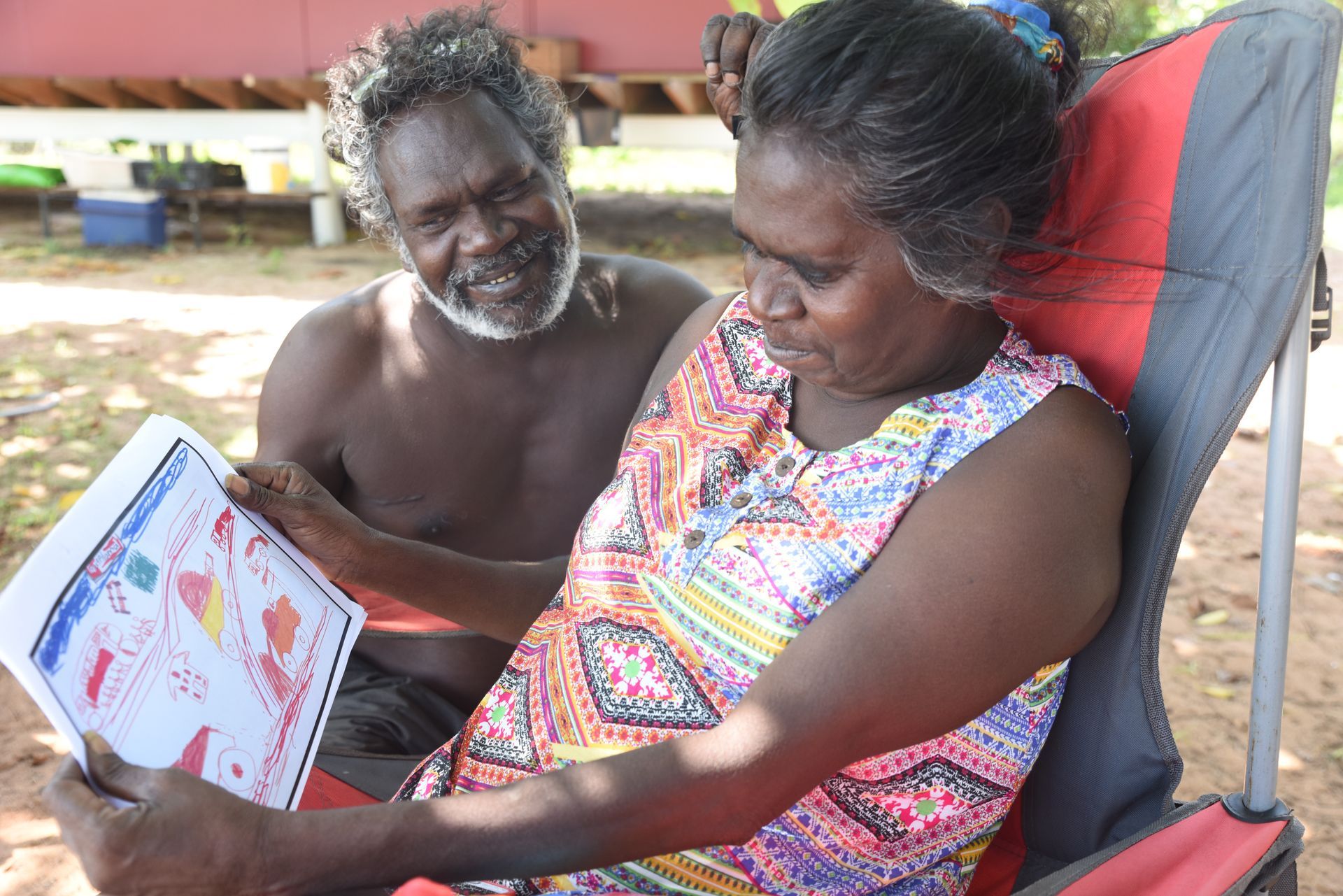
Maypilama Burrawanga (right) holds her drawing depicting trucks carrying bauxite from the nearby mine as school students watch on from a bus. Maypilama’s father worked at the Nabalco mine and she remembers visiting it on a school excursion.
“We are putting together an application for funds to cover the basic research needed to link the works with communities and to prepare the information needed for a possible exhibition.”
“The research will be collaborative and the plans of any exhibition will be developed with the artists’ communities.”
For Merrkiyawuy Ganambar, now she has seen the collection of children’s drawings from her childhood, she would like to see a similar project done with today’s students, and a new book published in comparison.
“I would love to have a similar one, like this, with the kids now. Make another book like this [showing] what they understand about the past, the beginning, what they understand about things happening now. I think it would be a big jump and a big contrast from this book if they do that.”
The drawings from the 1970s are done mostly in a western style – blue ocean, green hills, sun in the top corner.
“I think our children now would do a bit of bark painting and stories, especially of the land.”
“At that time it wasn’t something we thought about. We weren’t encouraged but then at that time we weren’t allowed to because the old people said it was too secret for a little girl like you.”
“I’d like to see it toured around Australia.”
Yolngu who attended Yirrkala School, Dhupuma College and Milingimbi School in the 1970s and who think their work might be in the collection can contact Buku-Larrnggay Mulka Centre at art@yirrkala.com for a copy of their work.
Some of the children's drawings from Arnhem Land in the 1970s.

